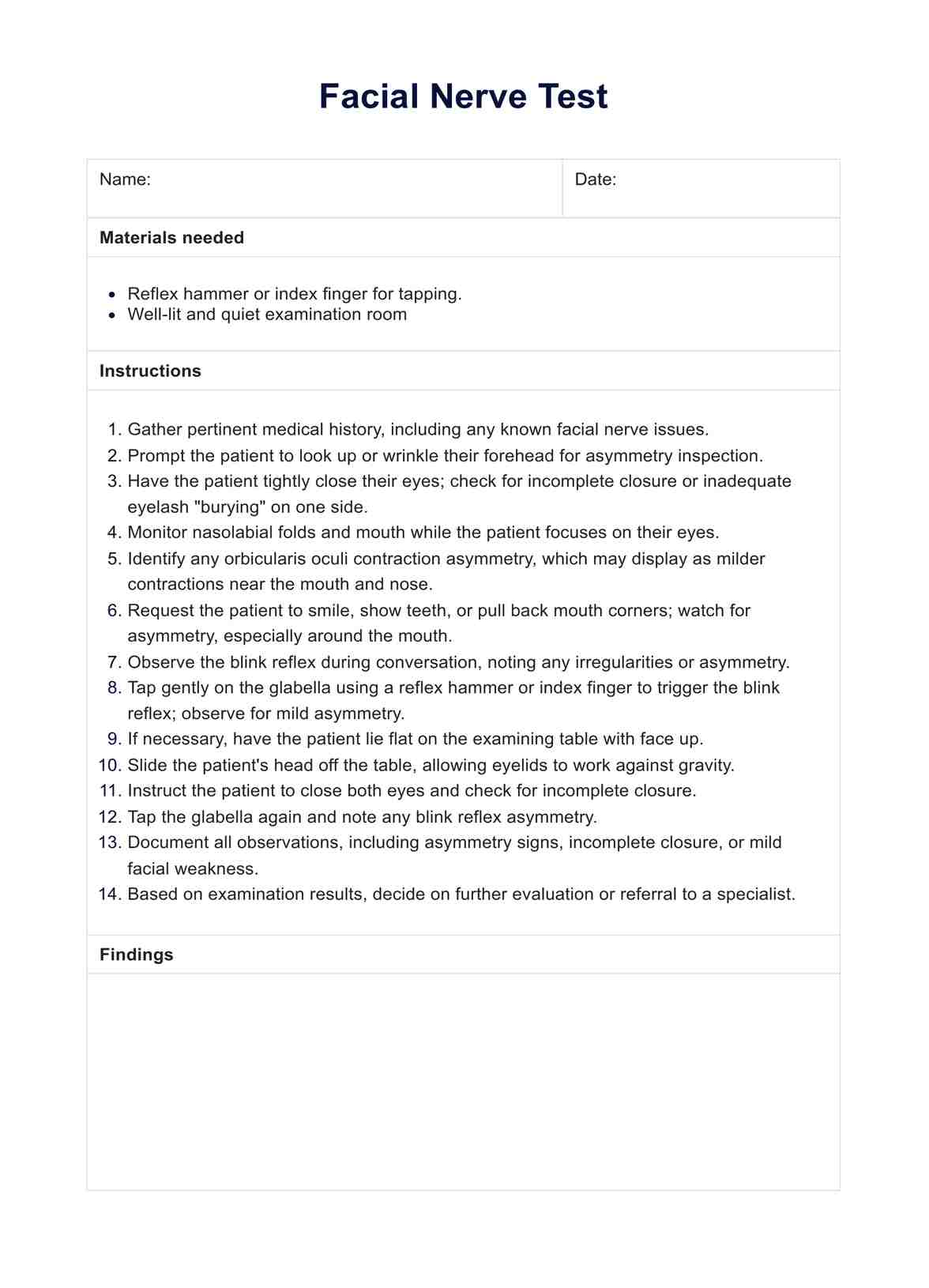The Facial Nerve Test is an assessment used to determine the integrity and function of the facial nerve, which is crucial after parotid gland surgery due to the proximity of the facial nerve to the surgical site. It can help detect any nerve impairment or damage post-operation.

Facial Nerve Test
Access a free Facial Nerve Test template to streamline your documentation. Learn how to perform a facial nerve exam with this guide.
Facial Nerve Test Template
Commonly asked questions
While the primary focus of the Facial Nerve Test is on the facial nerve, it may provide incidental information about the oculomotor nerve function through observation of eye movements and eyelid closure during the test.
The Facial Nerve Test itself does not directly assess the gag reflex as the vagus nerve and the glossopharyngeal nerve mediate this reflex. However, ask the patient to perform specific movements that can indirectly indicate whether the gag reflex is intact.
EHR and practice management software
Get started for free
*No credit card required
Free
$0/usd
Unlimited clients
Telehealth
1GB of storage
Client portal text
Automated billing and online payments











